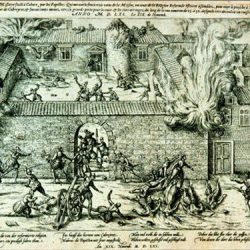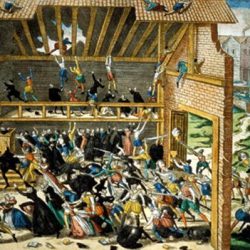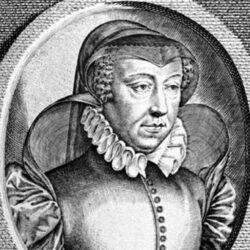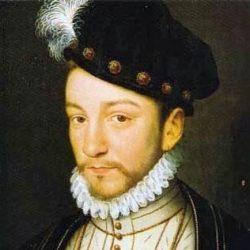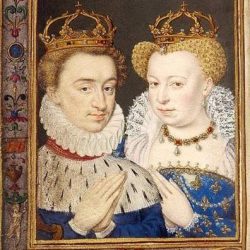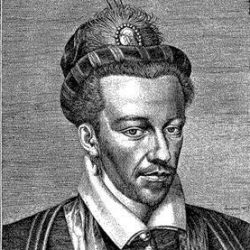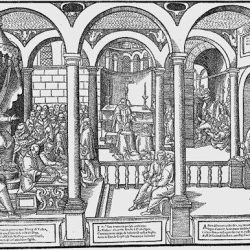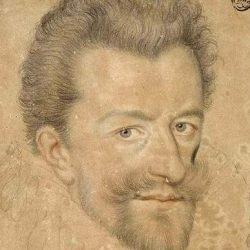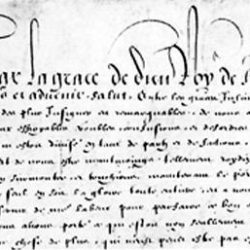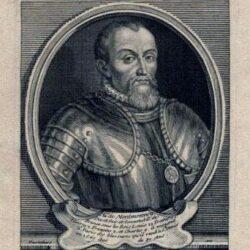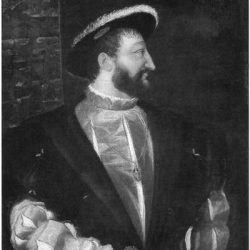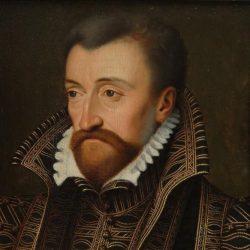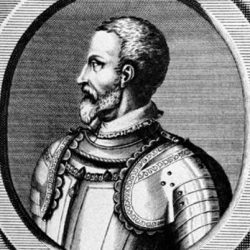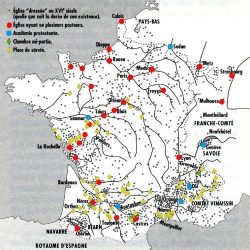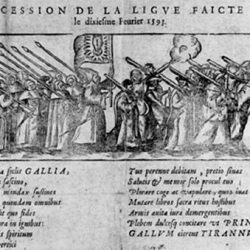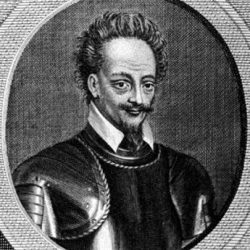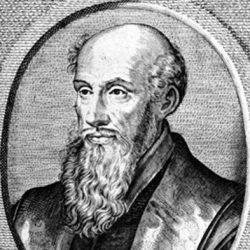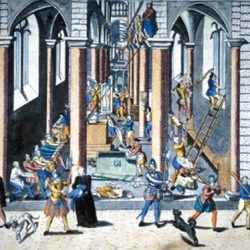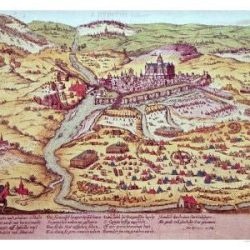The eight wars of religion in detail
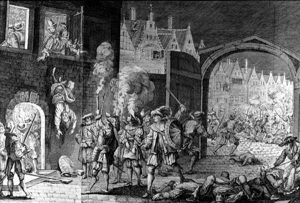
The wars lasted thirty-six years. The kingdom of France had 18 million inhabitants at that time – indeed, few other European countries had as many. The growth rate rose considerably in the first part of the XVIth century. France was also rich and this was mostly due to its agriculture – 90% of the population was rural. During the Religious Wars, both population and wealth decreased, so Henry IV had to completely rebuild his kingdom.
According to J. Garrisson, ‘In the collective memory, Protestantism and the Wars of Religion are closely connected.’ Indeed, these thirty-six years, stretching from 1562 to 1598, are among the darkest periods of French history.
A tragedy in three acts
1 – The prologue corresponds to the rise of Protestantism, which began with the influence of Luther’s ideas spreading in France from 1520 onwards. There was soon a reaction by the authorities and in 1532 the first Protestant was burnt at the stake. The Protestant minority quickly gained followers, with their ideas and influence being publicly acknowledged. The Catholic majority remained loyal to the traditional faith, which re-asserted itself in the Counter Reform. The now weakened royal power stood between the two, equivocating and trying to keep the kingdom from descending into chaos.
2 – A play in eight acts: the eight Religious Wars stretch from the massacre in Wassy in March 1562 to the Edict of Nantes in April 1598. Brief periods of war and peace alternated for thirty-six years, making it one of the most troubled times the kingdom of France had ever known. In between periods of fighting, treaties of ‘religious peace’ were signed, which were followed by ‘edicts to establish peace’. During these tragic years, warfare took place throughout the kingdom and consisted of fanaticism, martyrdom, vendettas, brigands, adventurers, and mercenaries: this violence culminated in the St. Bartholomew Massacre.
3 – The epilogue was the Edict of Nantes in 1598. Henry IV ruled over a United Kingdom which was no longer at war, but which had to be completely rebuilt. Although the edict did protect the Protestants, they were never again as numerous as before.
4 – Many other factors need to be considered if one is to fully understand the setting of this macabre play : the actors range in importance from the kings of the realm to their simple, impoverished subjects, the new balance of power which proved a threat to the king such as the League (Catholic) and the Huguenot State. The scenery was made up of acts of violence, which included wars abroad as well as battles at home.
5 – Many strong personalities played their part in this period. Every French family was involved and you can discover some portraits of the actors who played the leading roles in the religious wars.

